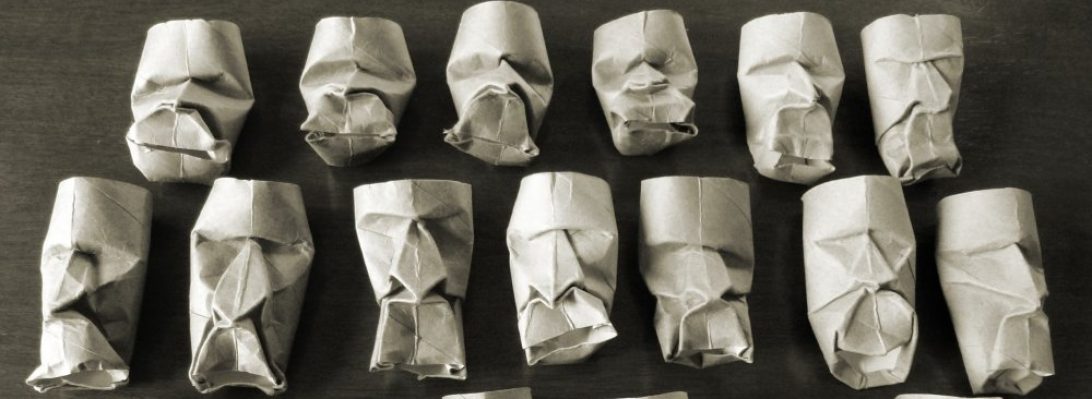Browsing the current Tanteidan magazine, as you do (if you are a paid up member of JOAS), I saw a curious design for a “yummy” rounded unit, designed by Miyuki Kawamura, and decided to fold one:

The fold sequence is simple, the collapse creates a volumetric, rounded, colour-changed “eye-ball” like unit that holds itself together using paper tension. Like most unit designs, it has flaps and pockets, so I had to fold another 2 to see how they connect.

Again, by the miracle of paper tension 3 units unite into a lovely cube corner, so I had to fold another 3 units to make the smallest solid kusudama, again positively locked and, boy, the geometry is fascinating.
Nestled in among the eyeballs is a perfect cube. I may fold more of these (however I will fold using a smaller paper (I used 15cm square, but can easily fold smaller) as I think the 30 module is the pinnacle of weird but interesting kusudama.
Continue reading





